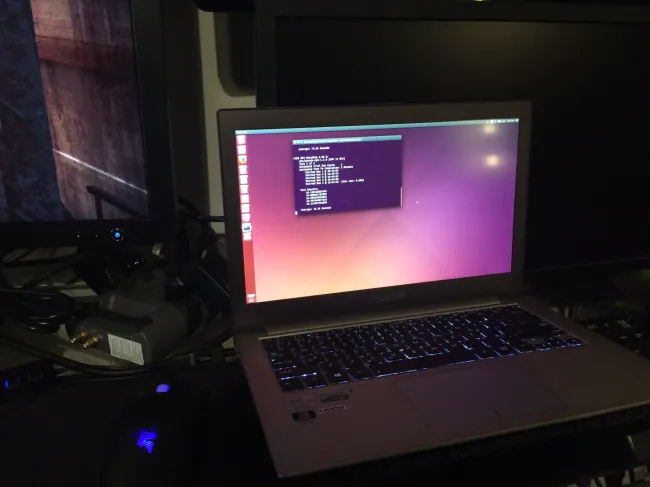In
upgrading to the new ThinkPad X1 Carbon Broadwell ultrabook, I'm debating whether to switch back to Fedora after having used Ubuntu for a number of years on my main production system after some falling out with a few less then stellar Fedora Core releases back in the day (of course, on test systems, there's plenty of Fedora around here but this is just about deciding on my next main OS for business tasks). In waiting for the new Broadwell ultrabook, I've been running some fresh Ubuntu and Fedora Linux tests on some other laptops/ultrabooks in the office.

As some basic tests done over the weekend, I was curious about the battery usage between Fedora 21 and Ubuntu 14.10. For this basic testing, the first laptop under test was the
ASUS Zenbook Prime. This laptop is loaded with an Intel Core i7 3517U Ivy Bridge CPU with HD Graphics 4000, 4GB of RAM, and dual 128GB SSDs. Fedora 21 and Ubuntu 14.10 x86_64 were tested via clean installations and using the default settings: the only change was maxing out the screen brightness under each OS to ensure they were at the same level. Also, Fedora 21 was tested both out-of-the-box and with all available system updates given Fedora's more liberal update policy in sending down new Linux kernel and Mesa releases, etc.
Via the
Phoronix Test Suite while the Zenbook was running on battery power and the
MONITOR=sys.power environment variable was set to log the power data, a few basic benchmarks were run followed by the
idle test profile during which I opened Nautilus, Firefox, the GNOME Terminal, and other very light desktop work on both Linux operating systems.
From this initial, rudimentary testing there wasn't any extreme difference between Fedora 21 and Ubuntu 14.10 but the numbers slightly favored Ubuntu Linux. On average, Ubuntu was 1~2 watts lower than Fedora 21 with the same Intel ultrabook. With enough tweaking though, Fedora could have likely performed the same or even better than Ubuntu, but this is just a measure of the out-of-the-box experience.
Go to this OpenBenchmarking.org result file to learn more and see some of the individual data points from this basic battery testing done over the weekend. Stay tuned for more Linux power tests from other systems. Feel free to share your Linux energy tips or preferred system configuration with the community by commenting on this article in our forums.


